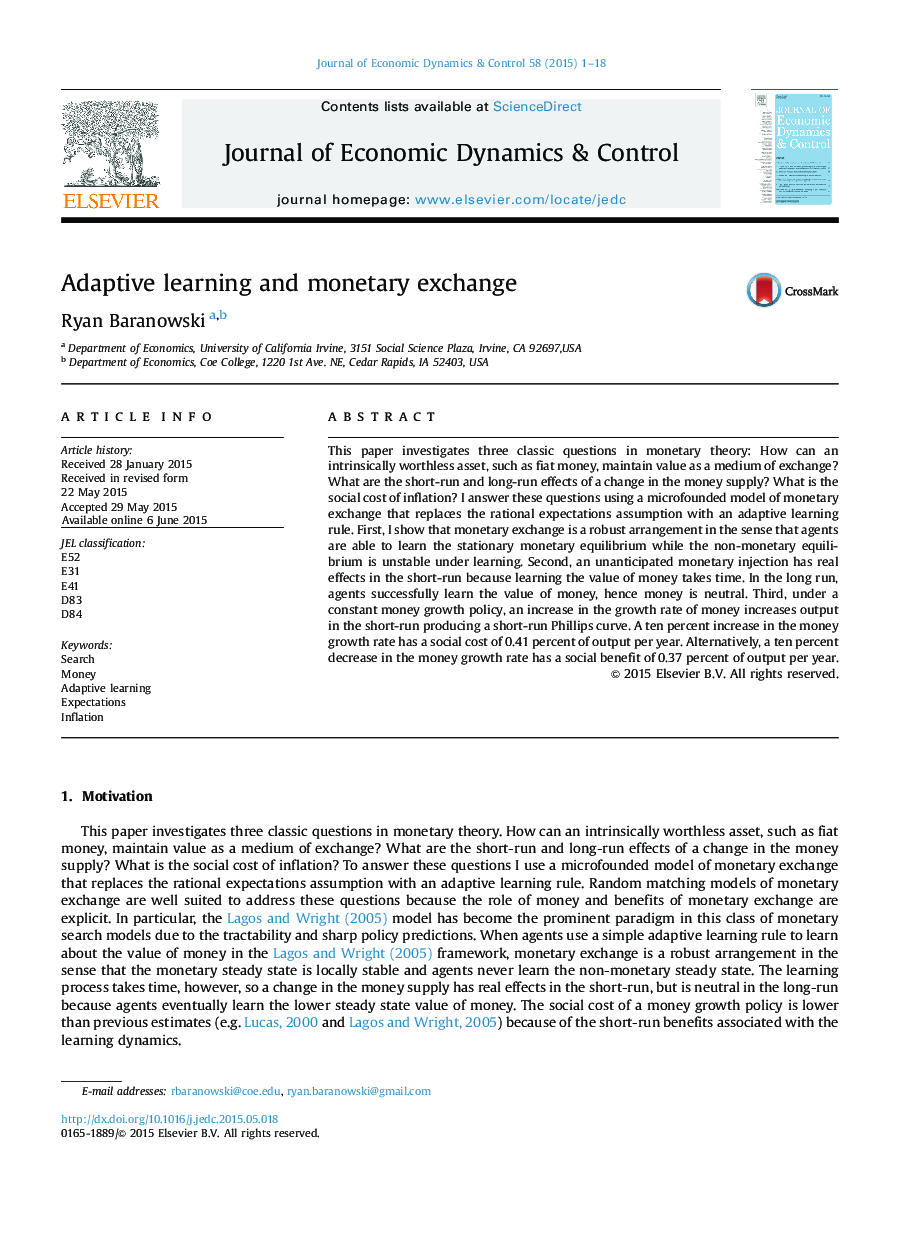| Article ID | Journal | Published Year | Pages | File Type |
|---|---|---|---|---|
| 5098275 | Journal of Economic Dynamics and Control | 2015 | 18 Pages |
Abstract
This paper investigates three classic questions in monetary theory: How can an intrinsically worthless asset, such as fiat money, maintain value as a medium of exchange? What are the short-run and long-run effects of a change in the money supply? What is the social cost of inflation? I answer these questions using a microfounded model of monetary exchange that replaces the rational expectations assumption with an adaptive learning rule. First, I show that monetary exchange is a robust arrangement in the sense that agents are able to learn the stationary monetary equilibrium while the non-monetary equilibrium is unstable under learning. Second, an unanticipated monetary injection has real effects in the short-run because learning the value of money takes time. In the long run, agents successfully learn the value of money, hence money is neutral. Third, under a constant money growth policy, an increase in the growth rate of money increases output in the short-run producing a short-run Phillips curve. A ten percent increase in the money growth rate has a social cost of 0.41 percent of output per year. Alternatively, a ten percent decrease in the money growth rate has a social benefit of 0.37 percent of output per year.
Related Topics
Physical Sciences and Engineering
Mathematics
Control and Optimization
Authors
Ryan Baranowski,
